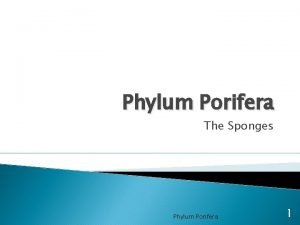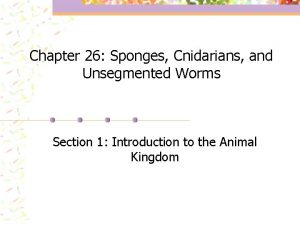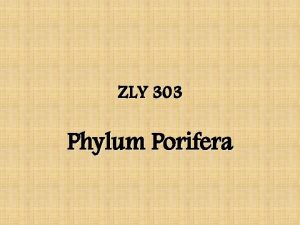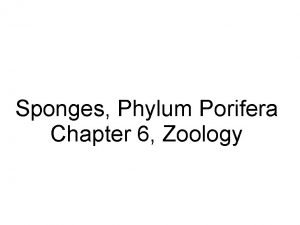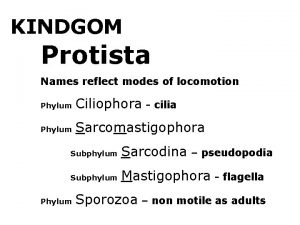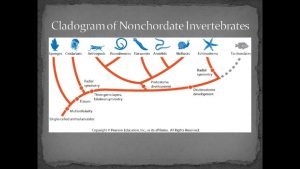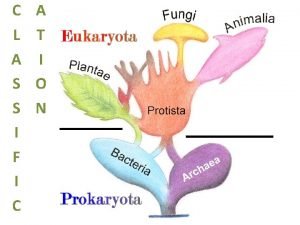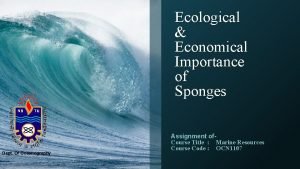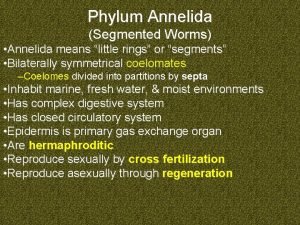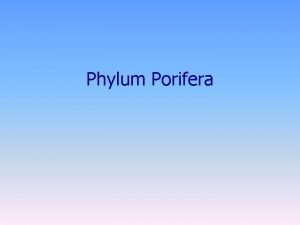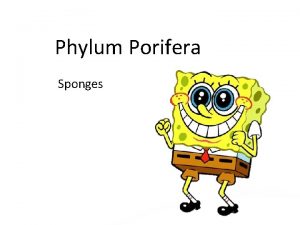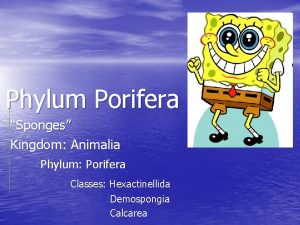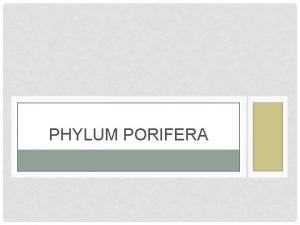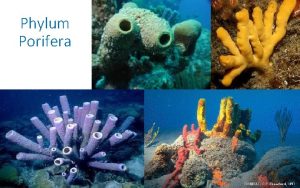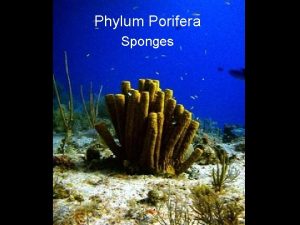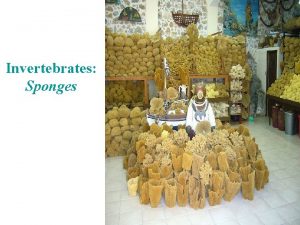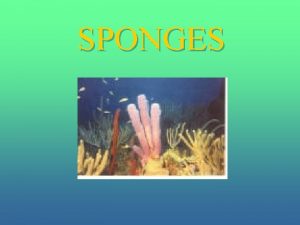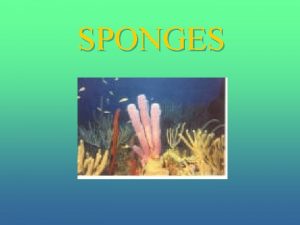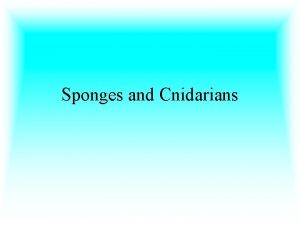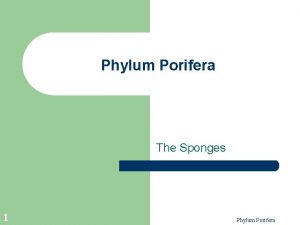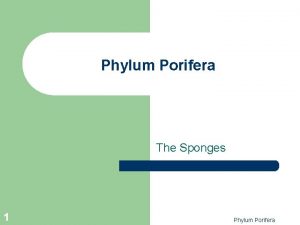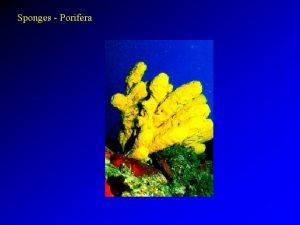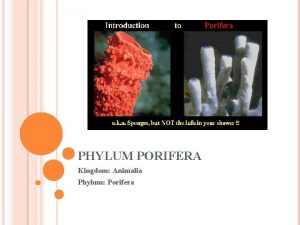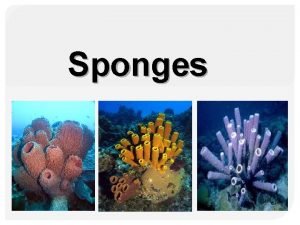Phylum Porifera The Sponges 1 Phylum Porifera Phylum













- Slides: 13

Phylum Porifera The Sponges 1 Phylum Porifera

Phylum Porifera Overview l Most primitive of the multicellular animals l Sponges – – – 2 Over 7, 000 species 2% of all sponges are freshwater, none are terrestrial None named Bob Phylum Porifera

Phylum Porifera Overview 3 l Sponges occur in shallow water habitats and vary widely in size (up to 1 m. high) and shape l All sponges are sessile (non moving) filter feeders. l They feed on small plankton that gets trapped in their pores. Phylum Porifera

Sponge Diversity Rope Sponge Black-ball sponge Yellow Tube Sponge 4 Phylum Porifera

How does a sponge work? 5 l Most sponges work rather like chimneys: they take in water at the bottom and eject it from the osculum ("little mouth") at the top. l Sponges can control the water flow by various combinations of wholly or partially closing the osculum and ostia (the intake pores) and varying the beat of the flagella, and may shut it down if there is a lot of sand or silt in the water. [3] Phylum Porifera

Collar Cells l Choanocytes 6 Choanocytes: (collar cells) act as a pump to bring water into the sponge Phylum Porifera

Sponge Support Collagen is found between the inner canals and chambers. Gives the sponge its shape. 7 Phylum Porifera

Spicules l Collagen is stiffened by adding microscopic minerals or additional protein fibers (spongin) or both. – 8 Spicules: skeleton structures, made of calcium carbonate (Ca. CO 3) or silicon dioxide (Si. O 2). Spicules Phylum Porifera

Porifera Reproduction l Asexual budding l Regeneration: can regenerate from broken pieces l Sexual – 9 Usually hermaphroditic with male and female cells scattered throughout the connective tissue. Phylum Porifera

Porifera Classification l 10 Phylum Porifera – Class Calcarea – Class Demospongiae – Class Hexactinellida Phylum Porifera

Class Calcarea 11 l Have spicules made of calcium carbonate l Mostly small in size (<15 cm. ), and form irregular masses l Never contain spongin, restricted to shallow water, and strictly marine Phylum Porifera

Class Demospongiae (Most sponges) 12 l Have spicules made of silicon dioxide (Si. O 2) or spongin or a combination of both l Most sponges belong to this class (90%) l Mostly found on the continental shelf l Spongia spp. (Bath sponge) Phylum Porifera

Class Hexactinellida (Glass sponges) l l 13 Spicules are made of silica Usually found in deep water on soft substrates in the tropics 200 -1, 000 m. Spicules are six pointed and have a lattice-like structure Cup, vase or urn shape Euplectella (Deep sea Glass sponge) Phylum Porifera
 Gambar porifera
Gambar porifera Sponges belong to the phylum
Sponges belong to the phylum Calcareous sponges
Calcareous sponges Poriferans are characterized by the presence of
Poriferans are characterized by the presence of Examples of sponges invertebrates
Examples of sponges invertebrates Phylum
Phylum Phylum porifera nervous system
Phylum porifera nervous system Features of porifera
Features of porifera Ecological importance of sponges
Ecological importance of sponges Annelus means small ring
Annelus means small ring Porifera features
Porifera features Sponges body plan
Sponges body plan Porifera
Porifera Questions about sponges
Questions about sponges
